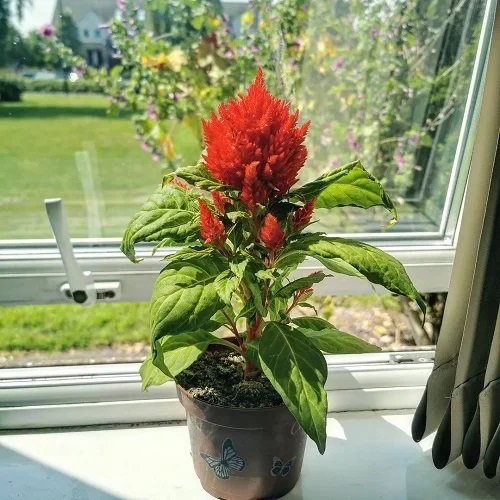Wondering How Cold Can Celosia Tolerate? What’s its limit? Time to find out all about Celosia Cold Tolerance!
Are you wondering just how resilient your vibrant Celosia plants are when the temperatures start to dip? Understanding the cold tolerance of this colorful, feather-like flower can make the difference between a flourishing plant and a frostbitten disappointment. If you’re looking to discover the secrets to keeping your Celosia thriving through chilly nights and seasonal changes, you’ve come to the right place! Read on to know How Cold Can Celosia Tolerate!
Look for the best Celosia Companion Plants here
How Cold Can Celosia Tolerate According to Different USDA Zones

Celosia plants are generally warm-weather plants that do not tolerate frost or cold temperatures well. Here’s a breakdown of how well they can endure varying temperature ranges according to USDA Hardiness Zones:
USDA Zones 1-4:
- Highest Tolerance: Up to 70°F (21°C)
- Lowest Tolerance: Celosia is not recommended for these zones, as they cannot tolerate frost or extended cold temperatures.
USDA Zones 5-6:
- Highest Tolerance: Up to 80°F (27°C)
- Lowest Tolerance: Down to 28-32°F (-2 to 0°C) for short periods; however, it’s best to bring them indoors or protect them when frost is expected.
USDA Zones 7-9:
- Highest Tolerance: Up to 90°F (32°C)
- Lowest Tolerance: Down to 28-32°F (-2 to 0°C); although they are slightly more tolerant, frost protection is still advised.
USDA Zones 10-11:
- Highest Tolerance: Up to 95°F (35°C)
- Lowest Tolerance: Typically no lower than 50°F (10°C), as these are frost-free zones suitable for growing Celosia year-round.
Note that these are general guidelines; individual plant experiences may vary based on other environmental factors like wind, soil quality, and humidity. If you’re growing Celosia in zones with marginal temperature tolerances, consider using protective covers or bringing the plants indoors during colder periods.
Look at the Comprehensive Celosia Intenz Growing Guide here
Signs of Cold Damage in a Celosia Plant
A Celosia plant exposed to cold temperatures outside the desired range may show following signs of cold damage:
- Leaf Color: Cold damaged Celosia leaves may develop dark spots, brown or black. These discolorations often appear watery or shrunken, indicating cell damage caused by the cold.
- Wilting of Leaves: Cold exposed Celosia leaves may wilt or droop, mainly due to damage to the plant’s vasculature. This wilting is a response to impaired uptake and transport of water in the plant.
- Browning of Leaves: Leaves exposed to cold temperatures may turn brown or develop brown edges. This discoloration is caused by cell damage and can spread from the tip to the center of the leaves.
- Reduced Growth: Low temperatures can suppress the plant’s metabolic processes, slowing growth and producing smaller, less robust leaves.
- Leaf Loss: Celosia plants may experience yellowing of the leaves with subsequent leaf drop when severely damaged by cold. This natural defense mechanism helps direct the plant’s resources to new growth by shedding damaged leaves to support overall recovery.
Check out Celosia Dragon’s Breath Care and Growing Guide here
Protecting Celosia from Cold Temperatures
Because Celosia is sensitive to cold temperatures, it needs protection when exposed to cold conditions. Here’s how you can protect your Celosia from the cold:
- Move to Sheltered Areas: Move the plant to a sheltered area in cold weather, such as a covered patio or indoors. This provides essential protection against the cold.
- Use Mulch: By spreading mulch on the topsoil, you can insulate and protect the plantfrom frost. Mulching also helps maintain a more stable soil temperature.
- Cover the Plant: Cover the plant at night with a light cloth or plant protection. This additional layer of insulation can protect the plant from frost.
- Wrap Pots: If Celosia is in pots or containers, consider wrapping the pots in insulating materials such as bubble wrap or foam board. This helps maintain a warmer root zone for the plant.
- Regular Monitoring: Monitor weather forecasts and temperature fluctuations. Be prepared to take protective measures in cold weather, especially at night.




